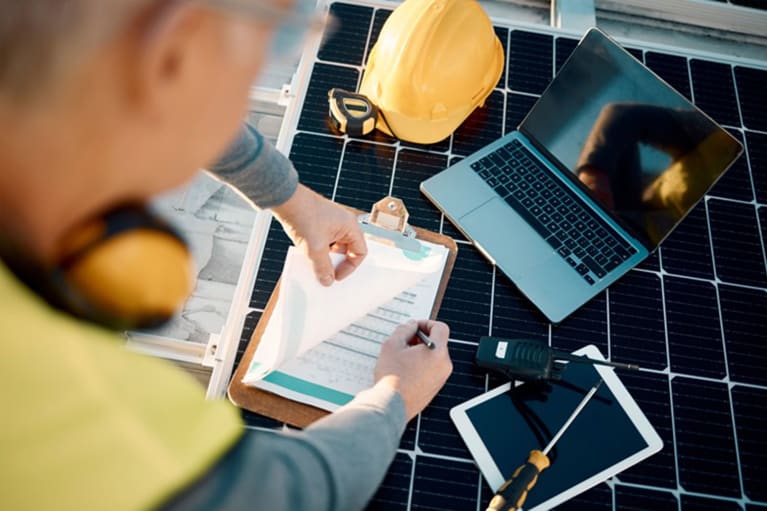
Implementation of the construction of a power line
Building a power line is a big engineering challenge. The investment may run through agricultural, wetland, floodplain, forest, protected, inhabited areas, along rivers, roads, and tracks. However, often the longest and most difficult work takes place before the proverbial “shovel is broken”. The contractor encounters numerous difficulties and formal and legal barriers that he must deal with professionally. What does such a process look like?
Changes in land use
Power lines often run through hundreds of plots. Larger structures or single electric poles mean one thing - exclusion of land from agricultural and forestry production. This requires concluding transmission easement agreements with their owners or perpetual users. These include:
- the owner's consent to install and remain the device indefinitely
- temporary provision of the area for the entry of construction machines
- consent to the entry of authorized service technicians in the future, in the event of necessary repairs, modernization and maintenance
- obligation to clean up the area after the investor completes the work
- determining the amount of remuneration for establishing a transmission easement and compensation for losses on the land as well as future compensation in the event of carrying out operational works
The right to use someone's land in the manner described is technically called a transmission easement. Its determination requires the preparation of a notarial deed with the owner's declaration of will. The bone of contention between him and the investor is usually financial issues, which is why property appraisers are often employed during negotiations. However, in accordance with the Real Estate Management Act, each construction of a power line constitutes a public purpose investment. It is therefore a project for the common good. Therefore, if the owner does not consent, restrictions on the use of the property may be imposed on the basis of an administrative decision. The county office decides on the so-called “small expropriation”, i.e. partial deprivation of property rights. It is subject to several conditions:
- the project must be consistent with the local spatial development plan or the decision to determine the location of the investment
- it must be demonstrated that the occupation of a given area is necessary for the construction of the power line
- first negotiations (unsuccessful) with the owner need to be conducted
Both parties may appeal against the county office's decision to the relevant voivode. Moreover, it is possible to establish a transmission easement based on a final court decision.
Permissions from public authorities
A new power line or substation needs a decision on environmental conditions. This is a permit from an environmental protection point of view. They are issued by the local commune head or mayor or the Regional Director for Environmental Protection. The design of overhead power lines often envisages the occupation of forest areas, which is why a decision is needed to allow the exclusion of land from forest production. Additionally, on behalf of the investor, you must apply for a permit to cut down trees and shrubs.
Construction of a power line vs development plans
You can get acquainted with two key documents at the relevant city or commune office:
- Study of conditions and directions of spatial development – covers the entire commune and determines its general directions of development.
- Local development plan – covers a smaller area and provides details of the permissible ways of using it.
Taking into account such a serious investment as the design of an overhead power line, it is often necessary to make changes to the above documents. In such a case, and also when there is no local development plan, it should be adopted. Sometimes, in the absence of a local development plan, it is possible to obtain a decision on determining the location of an investment for a public purpose. The application should be submitted to the commune/mayor of the city along with numerous attachments, including: a decision on environmental conditions, a master map of state resources, defining the boundaries of the area and characteristics of its development.
It is also worth mentioning that in the case of construction on high-class agricultural land (from 1 to 3) or forest land, the investment must be included in the local development plan (if the land has not been approved for a change of purpose). The procedures for adopting or amending the local spatial development plan require many arrangements and decisions, including: protection of nature and monuments, communication services, maintenance of local waters. This requires many consultations with experts. The entire construction is a linear investment, which often means the need for cooperation between neighbouring municipalities. There are also circumstances in which proceedings may be suspended in the case of the procedure for obtaining a decision on determining the location of a public purpose investment. All this makes this part of the formalities particularly difficult and time-consuming.

Power line development plan
Possibility of acceleration by dividing the construction into stages
After obtaining compliance with the local development plan, you also need either a building permit or a construction notification. It mainly depends on the rated voltage - up to 15 kV only notification is required. Moreover, permits are often needed for the reconstruction of crossed structures. Polish law allows long investments to be staged, i.e. issuing separate building permits for their parts. In this case, an essential condition is the ability for them to function independently as intended. This sometimes raises doubts, but for sections of transmission lines this practice is considered justified, because such division of formal and legal work helps to avoid errors and speeds up activities, making it possible to start construction earlier.
Formalities for the construction of transmission lines – changes in 2023
In 2023, the Act of July 24, 2015 on the preparation and implementation of strategic investments in the field of transmission networks was amended. The goal was to shorten the procedures, which is probably related to the recent rapid development of renewable energy sources. They have changed the dynamics of the entire national power grid, which requires faster expansion and modernization of the network. A definition of accompanying investments has been introduced, for which the procedures are simplified. Now these include high voltage lines from 110 kV managed by all distribution system operators. The list of strategic investments was increased from 52 to 85, plus 81 accompanying investments were added. Requirements for obtaining permits or the obligation to report construction have also been liberalized.
Another change in the legal environment of the investment is the amendment to the regulations on spatial planning and development, which eliminates the provisions on the conditions and directions of spatial development described above. By the end of 2025, they are to be completely replaced by general plans, which will be acts of local law. They are to be more transparent and practical, as well as freely available in the IT system. Local development plans will be prepared on their basis in the future.
The formalities preceding the construction of a power line are numerous and complicated. To meet the challenge, contractors employ construction law specialists, urban planners and property appraisers. Their work is necessary so that the investment can proceed smoothly and to the satisfaction of everyone on whom it will have a significant impact.
